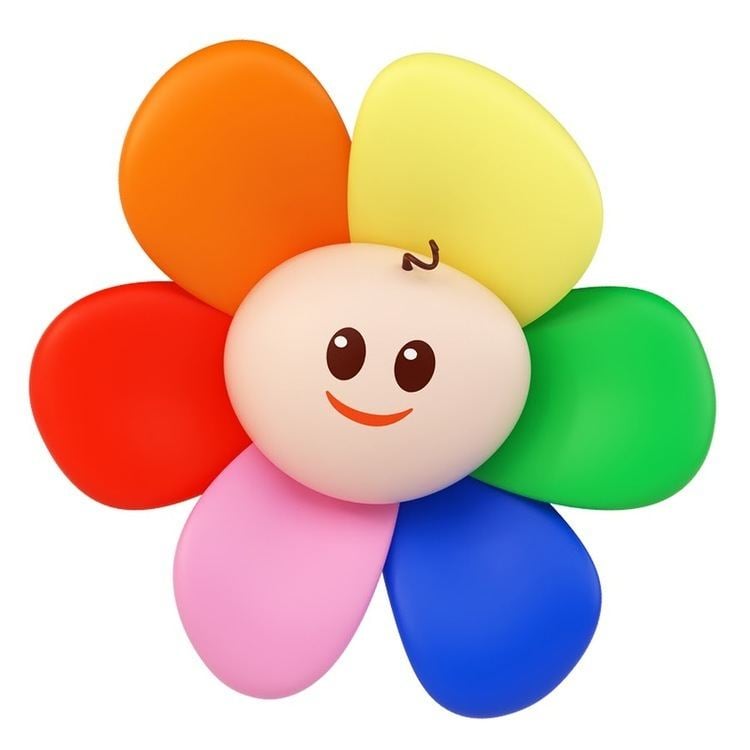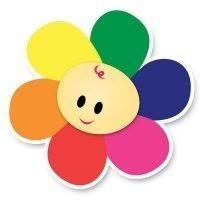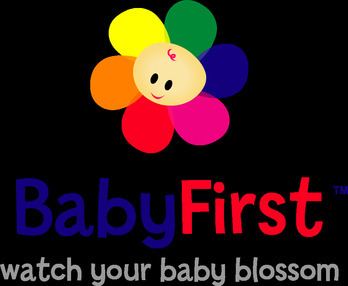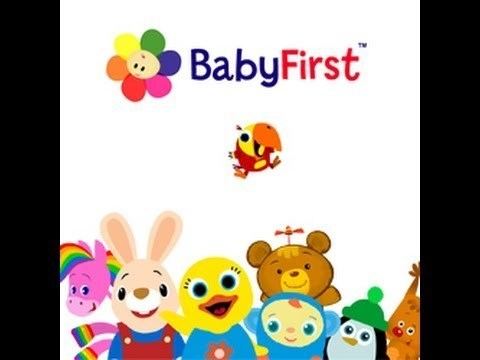Launched May 11, 2004 Motto Watch Your Baby Blossom | Founded 2003 | |
 | ||
Owned by Regency EnterprisesKardan N.V.Bellco Capital, LLC Slogan Watch Your Baby Blossom Language EnglishSpanishFrenchTurkishGermanPortuguesePolishThai Broadcast area United StatesMexicoEuropeAsia Similar Nick Jr., BabyTV, PBS Kids Profiles | ||
Colors compilation for kids learn colors for children color crew babyfirst tv
BabyFirst is a media company that produces and distributes content for babies through television, the internet and mobile apps. The content is intended to develop a baby's skills, such as color recognition, counting and vocabulary. There are about 90 BabyFirst TV shows and 41 apps for mobile devices. As of 2014, the network is distributed to 81 million homes, and is based in Los Angeles, California.
Contents
- Colors compilation for kids learn colors for children color crew babyfirst tv
- Apple what is it vocabularry babyfirst tv
- Origins
- Distribution expansion
- Recent history
- Programming
- References

BabyFirst was founded in 2004 by Guy Oranim and Sharon Rechter. Its first broadcast was through DirecTV in 2006. It was founded by Regency Enterprises, Kardan, and Bellco Capital. Distribution expanded through agreements with the Echostar Dish Network, Comcast, AT&T U-verse and others. It also developed a premium BabyFirst YouTube channel, and mobile apps. One app developed with AT&T U-verse allows babies to interact with the television programming by drawing on a mobile device.

Apple what is it vocabularry babyfirst tv
Origins

BabyFirst was founded in 2004 by Guy Oranim and Sharon Rechter. The network was launched on May 11, 2006 on DirecTV and was later made available through EchoStar's Dish Network that June. It was made available through EchoStar's Dish Network that June. The BabyFirst network is based in Los Angeles and was initially funded by Regency Enterprises (a Hollywood movie studio), Kardan (a holding company) and Bellco Capital (a private fund). BabyFirst was controversial when it was introduced, because it was the first 24-hour channel for children six months to three years in age. However, the channel was popular among parents and grew quickly.
Distribution expansion

In 2007, BabyFirst obtained agreements to distribute the channel in the United Kingdom through the BSkyB satellite network as well as in Mexico through Sky Mexico and Cablevision. A French version was introduced with CanalSat in 2007. By the end of 2007, it had arranged broadcasting agreements throughout Europe, the Middle-East and Canada among others.

BabyFirst also started broadcasting in ten territories in the Asia Pacific, such as China and Korea. In October 2008, SingTel started distributing the channel to the Singapore audience. It was also being broadcast in Africa and Latin America. In May 2008, it signed a distribution agreement with Time Warner Cable. In 2009, HBO Asia became the exclusive distributor for the channel in Asia. A bilingual Latin/English channel, BabyFirst Americas, was launched with Comcast in 2012. A premium BabyFirst YouTube channel was introduced in June 2013.

In the early 2000s, the Federal Trade Commission responded to a complaint by the Campaign for a Commercial Free Childhood alleging that BabyFirst's advertising that it helped babies develop skills was misleading. The FTC did not impose any sanctions. As of 2014, it has 81 million viewers and is broadcast in 33 countries, in ten languages.
Recent history
In 2013, former ABC Network President Steven McPherson and Rich Frank, the former chairman of Disney Channel became investors and board members as the company worked to develop new content and improve advertising revenues. In May 2014, BabyFirst and AT&T U-verse released a co-developed second-screen app for mobile devices that allows children to interact with the television programming through tablets or smartphones.
Programming
BabyFirst's television channel provides 24-hour programming for babies. About 90 percent of the 90 shows BabyFirst produces are original content created at BabyFirst's studios. It produces and broadcasts short videos three to five minutes in length that are either live-action or animated.
The New York Times described the content as "decidedly unhurried" and said it makes extensive use of bright colors and upbeat music. Programming development is guided by child psychology experts and is designed to encourage a child's skills development, such as counting, vocabulary and color recognition. The BabyFirst logo in the corner changes colors to indicate the skills a segment is intended to develop. Late-night programming is intended to lull viewers to sleep.
There are also 41 BabyFirst apps for mobile devices. An app available to AT&T U-verse viewers allows children to draw on a mobile device and have the drawing appear on the television screen.
Some experts argue that exposing children to television at such an early age is taking technology too far or that parents are using BabyFirst as a digital babysitter. Parents in-turn refute that argument, claiming that experts have lost touch with the realities of raising a child. BabyFirst suggests the programming is intended to be watched by parents and their children together in an interactive way. The American Academy of Pediatrics recommends against exposing children under the age of two to television, while a 2003 study by the Kaiser Family Foundation found that most children under two years of age are already watching TV. According to The Washington Post, very little is known about whether young children watching television has a negative or positive effect on them. It has some acquired programs such as Juno Baby, Mio Mao, Musti, Suzy's Zoo, and Tec the Tractor.
It shows Original Programs like Tillie Knock Knock, VocabuLarry, Peek-a-boo I See You, The Numbers Farm, and more.
